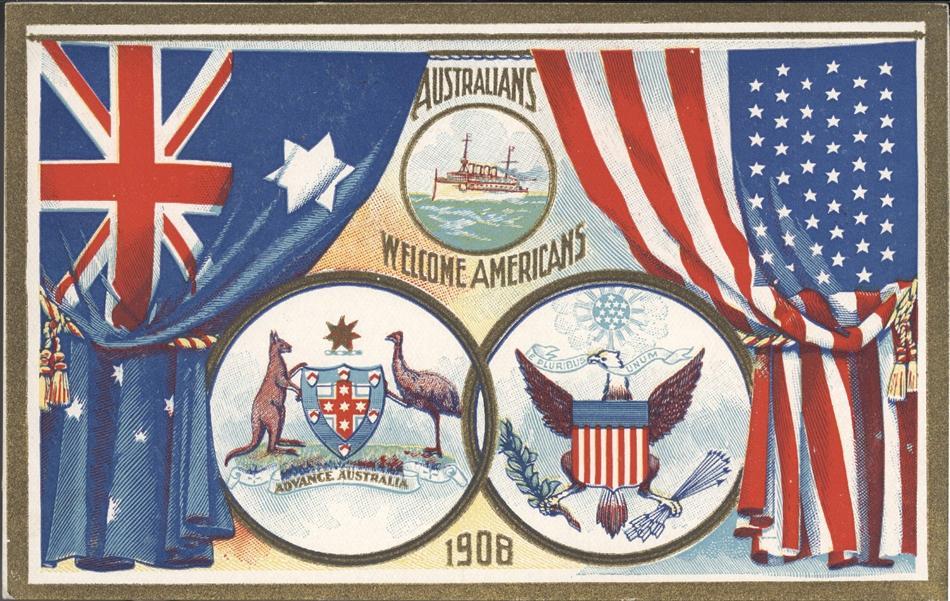
To see what Donald Trump will do to the future of the Oz-US alliance, ponder the lessons of the foundation legends.
Start with the Labor Party’s creation saga: John Curtin’s turn to the US. The Coalition government has fallen on the floor of Parliament and Curtin becomes Prime Minister in October, 1941. Two months later, Japan attacks Pearl Harbour and invades Southeast Asia. Australia faces its greatest existential threat.
Early on Saturday, 27 November, 1941, come to Melbourne’s Flinders Street, where Cecil Edwards is news editor of Australia’s great afternoon paper, The Herald.
The editor brings Edwards the proof of an article that’s to be published in the magazine pages—a new year’s message from John Curtin—and suggests a Page One pointer. Edwards reads the article and announces: ‘This ought to be the lead of the paper.’
Curtin’s key sentence enters history: ‘Without any inhibition of any kind, I make it clear that Australia looks to America, free of any pangs as to our traditional links and kinship with the United Kingdom.’
Edwards, also a Reuters stringer, cables several hundred words to London, ‘and within hours we were receiving agitated reaction. It was the first time in my experience that a magazine page article in an Australian newspaper became front-page news in England, and stirred breasts in Whitehall and Downing Street’.
As Edwards later wrote, Curtin’s article had been in the office for days, and no-one had grasped its significance. If the editor hadn’t noticed it in proof, ‘the most outspoken public declaration ever made by an Australian Prime Minister, would have remained buried in the magazine pages.’ Some rare days in journalism, you nearly scoop yourself.
The Brits are outraged. Churchill threatens to combat Curtin by broadcasting direct to the Australian people. In Washington, Roosevelt smells funk. The President calls in Australia’s Ambassador, Richard Casey, for a private talk, not to be reported to Canberra.
We have two versions of this meeting. First, from the memoirs of Casey’s wife, Maie Casey: ‘President Roosevelt sent for Dick and told him if it was thought that this statement would ingratiate Australia with the US he assured him it would have the opposite effect. It tasted of panic and disloyalty.’
In a biography of Casey, W.J. Hudson wrote of Casey’s belief that Washington viewed Curtin’s appeal ‘as almost treason against the major ally, Britain, as an unpleasant ditching of that ally in time of stress, as an unbecoming attempt to change horses’.
Casey’s record of the FDR conversation was on a paper found in his safe eight years after his death. Casey recorded:
‘In an interview with President Roosevelt shortly afterwards, he expressed the greatest distaste about this [Curtin] statement . . . making it clear that he was speaking to me privately and not officially. He put me under a seal of secrecy … He said that if it was thought that such a statement as Mr Curtin had made would help Australia with the United States, he assured me it would not.’
Six months later (1 June, 1942), Curtin’s war cabinet convenes in Melbourne for talks with the new Commander-in-Chief, Douglas MacArthur. The General tells Curtin that America sees Australians as a bunch of bronzed Brits, tied to Britain by blood and sentiment, and America has no particular commitment to Oz. The minutes quote MacArthur:
‘The US was an ally whose aim was to win the war, and it had no sovereign interest in the integrity of Australia. Its interest in Australia was from the strategical aspect of the utility of Australia as a base from which to attack and defeat the Japanese…The Commander-in-Chief added that, though the American people were animated by a warm friendship for Australia, their purpose in building up forces in the Commonwealth was not so much from an interest in Australia but rather from its utility as a base from which to hit Japan. In view of the strategical importance of Australia in a war with Japan, this course of military action would probably be followed irrespective of the American relationship to the people who might be occupying Australia.’
This archival gem was unearthed by Peter Edwards who unveiled it in the 2001 John Curtin lecture marking the 60th anniversary of Curtin becoming PM.
Edwards commented that MacArthur was throwing back in Curtin’s face his proclamation about turning away from traditional links and kinship:
‘From what MacArthur said, it would not have mattered whether Australians had brown or black or purple skins; whether they were Muslim or pagan or Zoroastrian by religion; or whether they spoke thirty-eight different languages, all incomprehensible to American ears. The Australian landmass offered a geographically convenient base for American forces, and that was all that mattered to American policy-makers.’
Australia and the US have done a lot together in the seven decades since Curtin gave Australia a realpolitik reading and MacArthur returned the favour. The alliance endures and evolves. Australia has gone to every war with the US. Instead of MacArthur’s tough talk, both sides lay it on with a trowel. And yet…
Some creation story lessons:
- Panic softly, so as not to alarm friends.
- Traditional links (alliance and past wars) help but may not be decisive.
- The only nation with its own continent offers much of strategic worth.
Leaders’ beliefs matter but they are driven by the forces they confront.
FDR’s distaste for Curtin’s ‘panic and disloyalty’ didn’t weigh against the much larger demands of war against Japan and alliance with Oz; Curtin’s description of what was needed was accurate. The Donald may be more interested in transactions than traditions; that’s OK, because Australia brings a lot to the transaction table. And Curtin showed Australia’s supremely pragmatic ability to ditch ‘traditional links’ to do the vital deal.